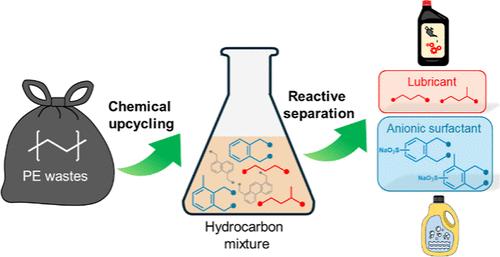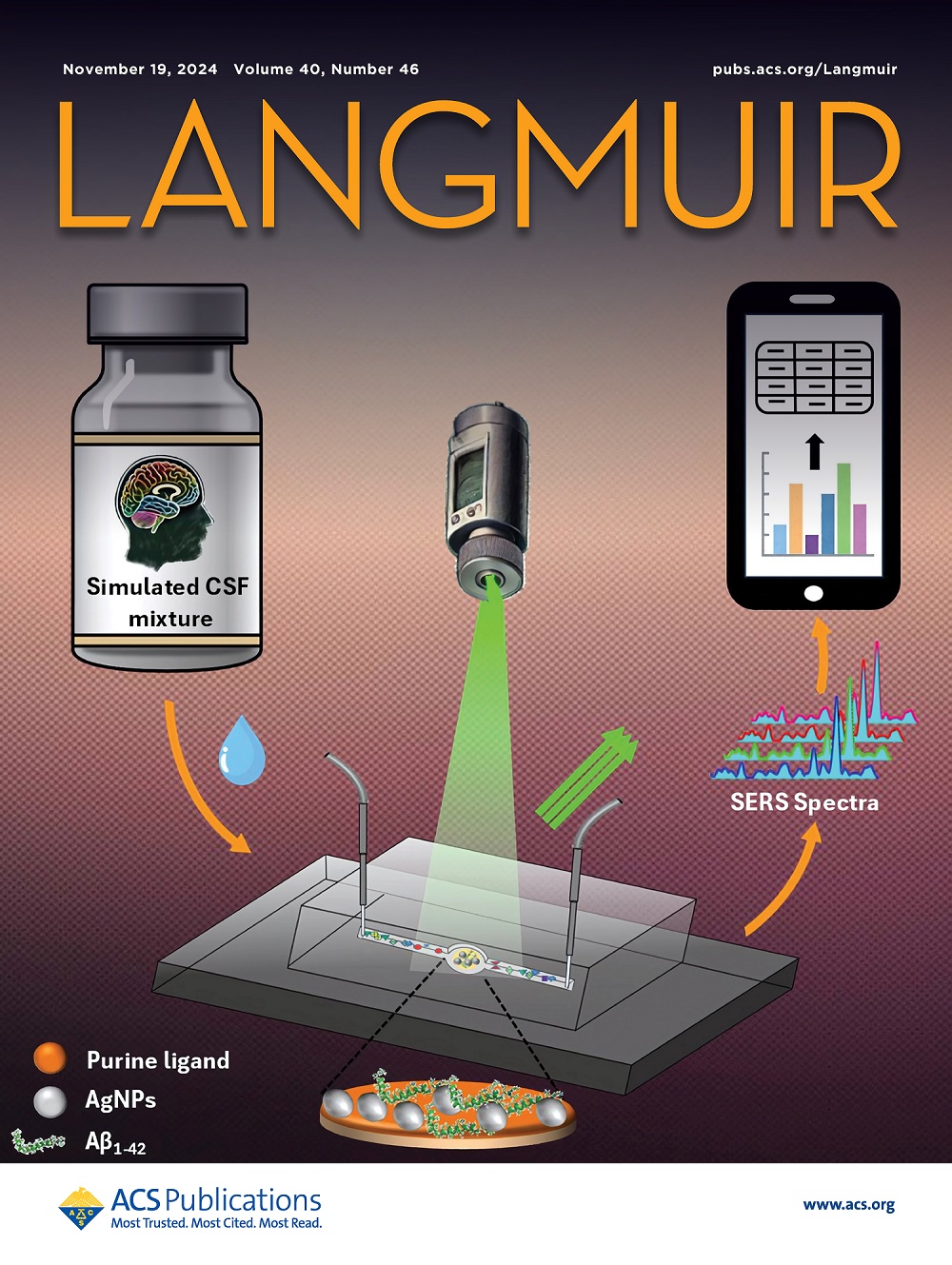Anionic Surfactants from Reactive Separation of Hydrocarbons Derived from Polyethylene Upcycling
IF 3.7
2区 化学
Q2 CHEMISTRY, MULTIDISCIPLINARY
引用次数: 0
Abstract
Chemical upcycling of polyethylene (PE) to long-chain alkylaromatics through tandem hydrocracking/aromatization has potential to provide value-added chemicals. However, the liquid product is a complex mixture of alkanes, alkylbenzenes, and polyaromatics, limiting its direct usability. The most valuable component of the product mixture is the alkylbenzenes because of their potential as precursors to anionic surfactants. In this study, a one-pot reactive separation is described. Sulfonating the product mixture from PE upcycling with silica sulfuric acid followed by neutralization with sodium hydroxide yields sodium alkylbenzenesulfonates (up to 93 mol % selectivity), along with a separate phase of lubricant-range hydrocarbons as a coproduct. Compared to petroleum-based sodium dodecylbenzenesulfonates, the reported PE-derived surfactant molecules show competitive physicochemical properties, including surface tension and interfacial tension. According to life cycle assessment, the described reaction strategy demonstrates 20% lower greenhouse gas emissions, when considering uses for the coproducts of PE upcycling, compared to conventional linear alkylbenzenesulfonates (LAS) manufacturing directly from petrochemical feedstocks.

求助全文
约1分钟内获得全文
求助全文
来源期刊

Langmuir
化学-材料科学:综合
CiteScore
6.50
自引率
10.30%
发文量
1464
审稿时长
2.1 months
期刊介绍:
Langmuir is an interdisciplinary journal publishing articles in the following subject categories:
Colloids: surfactants and self-assembly, dispersions, emulsions, foams
Interfaces: adsorption, reactions, films, forces
Biological Interfaces: biocolloids, biomolecular and biomimetic materials
Materials: nano- and mesostructured materials, polymers, gels, liquid crystals
Electrochemistry: interfacial charge transfer, charge transport, electrocatalysis, electrokinetic phenomena, bioelectrochemistry
Devices and Applications: sensors, fluidics, patterning, catalysis, photonic crystals
However, when high-impact, original work is submitted that does not fit within the above categories, decisions to accept or decline such papers will be based on one criteria: What Would Irving Do?
Langmuir ranks #2 in citations out of 136 journals in the category of Physical Chemistry with 113,157 total citations. The journal received an Impact Factor of 4.384*.
This journal is also indexed in the categories of Materials Science (ranked #1) and Multidisciplinary Chemistry (ranked #5).
 求助内容:
求助内容: 应助结果提醒方式:
应助结果提醒方式:


